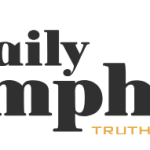City of Birmingham
Birmingham Officials Outline ARPA Spending

Birmingham officials on Thursday released a 23-page report detailing the nearly 200 city projects paid for by more than $141 million in federal COVID-reponse funding.
Mayor Randall Woodfin and other city leaders held a press conference to announce the report and outline some of the major Birmingham projects the American Rescue Plan Act helped fund.
“It’s really remarkable to think about where we were just five short years ago, the entire world gripped by uncertainty, isolation and fear of what’s to come,” said City Council President Darrell O’Quinn. “I talked to a lot of elected officials from across the country, and something that has struck me is the unique way Birmingham utilized these dollars. Mayor Woodfin and his team deserve a lot of credit for how they disburse these funds.”
O’Quinn said that by allocating $3 million for each council district, city leaders were able to maximize the money’s impact across the city.
“As far as I could tell, no other city in America took the same route,” he said.
Chris Hatcher, Birmingham’s chief community planner, said city staff should be commended for their efforts in getting all ARPA funding assigned to projects throughout the city. Now, he said, the work begins to make sure all of that money is spent by the end of 2026.
“So you can rest assured that our team will keep working diligently to make sure that all of those funds are expended under all of our federal compliance requirements, so that we won’t have to give any money back to the federal government,” he said.
The report released Thursday provides a breakdown of nine major expenditure categories for the ARPA funding. The largest, at nearly a third of the spending, was Revenue Replacement, which officials described as efforts to shore up tax revenue lost in the pandemic. The second largest was what city leaders labeled “Negative Impact.” According to the report, this included 18 projects throughout the city to provide affordable housing as well as investments in parks and recreation.
Birmingham’s ARPA Spending by Category
| Expenditure | % of ARPA Funds | Amount |
| Administrative | 3.3% | $4.68 million |
| Negative Impact | 27.7% | $37 million |
| Services to Disproportionately Impacted Communities | 16.2% | $20.9 million |
| Premium Pay (Staff bonuses) | 12.6% | $17.7 million |
| Revenue Replacement | 30.1% | $42.5 million |
| Infrastructure | 2.1% | $2.9 million |
| Public Health (Includes violence reduction programs) | 8% | $11.2 million |
The report also lists six primary goals for use of the federal money:
Goal 1: Safe Secure and Sustainable Communities. Birmingham allocated $5.5 million for community violence intervention programs such as the Offender Alumni Association and Jefferson County Hospital-Linked Intervention Program. The city also allocated $9.6 million to deal with nuisance properties as well as $2.8 million toward water and sewer projects.
Goal 2: Healthy Thriving and Diverse Neighborhoods. The city allocated $25 million to transportation, including road improvements and public transit investments. Officials also put $11.6 million toward neighborhood features that improve health and safety outcomes. Examples include the Clairmont Walking Trail and C&E Groceries at Village Market, which is in development. This goal also includes affordable housing, for which the city allocated $9 million with projects such as Veranda at Graymont School and the Belview Heights housing development.
Goal 3: High-Performing 21st Century Education and Workforce Development Systems. The city invested $4 million to address educational disparities, $8.5 million to reduce unemployment and underemployment and $185,000 to provide wraparound services. Examples include the Birmingham Upskill Partnership Initiative and the Good School Food and Apprenticeship Program.
Goal 4: Innovative and Inclusive Economy, Supported, Shared and Served by All. Birmingham leaders invested $8.5 million to support small businesses and nonprofits, including forgivable Birmingham Business Resource Center loans and the Birmingham ToolBank.
Goal 5: Highly Effective, People-First Smart Government. The city allocated $41.5 million to increase investments in “enterprise-wide technologies and improving efficiency between Birmingham City Hall and residents.” Examples provided for this category include $16 million for the Premium Pay bonus program for city employees as well as the more than $5 million in retention bonuses for police, firefighters and public works staff. As part of this category, city leaders also pointed to investments in its information management systems and software.
Goal 6: Global Legacy Leadership Partner for Equity and Social Justice. City leaders allocated $1.3 million to support projects that “honor its civil rights legacy, preserve historic sites and implement restorative policies for communities affected by historical injustices.” Investments in this category included renovations to the Birmingham Civil Rights Institute Library as well as marketing and promotion services for local historically black colleges and universities.


